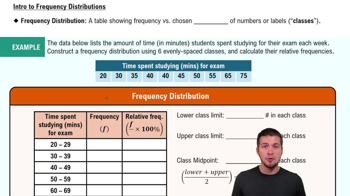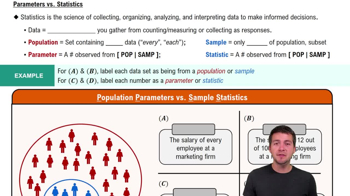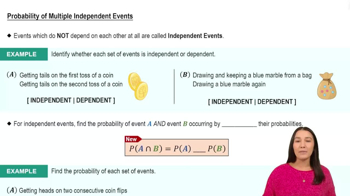Here are the essential concepts you must grasp in order to answer the question correctly.
Poisson Distribution
The Poisson distribution is a probability distribution that expresses the probability of a given number of events occurring in a fixed interval of time or space, given a known average rate of occurrence. It is particularly useful for modeling rare events, such as deaths in a small population, where the events occur independently of each other.
Recommended video:
Intro to Frequency Distributions
Rate Parameter (λ)
In the context of the Poisson distribution, the rate parameter (λ) represents the average number of occurrences in the specified interval. For the village of Westport, with an average of 7 deaths per year, λ would be 7. When calculating probabilities for shorter intervals, such as a day, λ must be adjusted accordingly (e.g., λ = 7/365 for daily calculations).
Recommended video:
Parameters vs. Statistics
Probability of No Events
To find the probability of observing no events in a Poisson distribution, the formula P(X=0) = e^(-λ) is used, where e is the base of the natural logarithm. This formula indicates the likelihood of zero occurrences when the average rate is λ. In this case, it helps determine the probability of no deaths occurring on a given day in Westport.
Recommended video:
Probability of Multiple Independent Events






